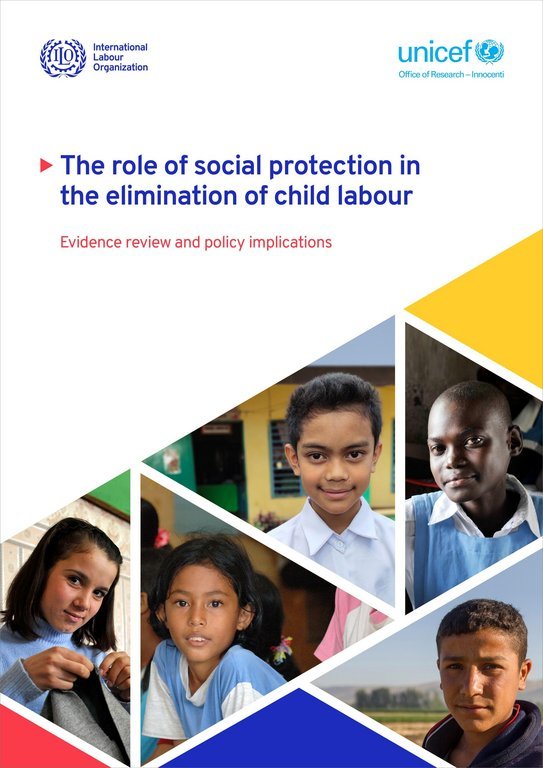 Read this article in French
Read this article in French- Share this article
- Subscribe to our newsletter
The role of social protection in the elimination of child labour
The report The role of social protection in the elimination of child labour: Evidence review and policy implications presents evidence from a number of studies conducted since 2010 that show how social protection – by helping families cope with economic or health shocks – reduces child labour and facilitates schooling. It was published by the International Labour Organization (ILO) and the United Nations Children's Fund (UNICEF) in May 2022.
Too little progress has been made in ensuring that all children enjoy social protection. World-wide, 73.6 per cent, or some 1.5 billion children, aged 0-14 years, receive no family or child cash benefits. This large protection gap must be closed rapidly, the report says.
Governments have a range of policies they can deploy to promote social protection. If policymakers do not act decisively, the COVID-19 pandemic, ongoing conflict, rising poverty, and climate change will only increase the prevalence of child labour, according to the report.
To strengthen social protection systems for the prevention and elimination of child labour, the report makes a number of recommendations:
- Close the social protection coverage gap for children. This means prioritising child benefits, as well as extending social protection to the two billion workers in the informal economy, thereby supporting their transition from the informal to the formal economy.
- Build integrated social protection systems. Reducing child labour will be easier if countries have a social protection system that provides adequate benefits throughout the life cycle, from child and family benefits, maternity and unemployment benefits to old-age pensions, as well as health protection.
- Ensure that the design of social protection programmes is inclusive and child-labour sensitive. This will help maximise child labour reduction and requires:
- implementing child and family benefits that reach all households with children, especially those in situations of greatest vulnerability
- making it easy for caregivers to receive their social protection benefits by simplifying registration procedures and providing different benefit payment mechanisms
- complementing social protection programmes with increased investment in universal, quality, basic education and other vital social services for children
- Build on the strong political commitment that already exists to end child labour and establish universal social protection to strengthen consensus for action. The Sustainable Development Agenda and the strong consensus agreed by the International Labour Conference in 2021, as well as the outcome of the Durban child labour conference, can help coordinate international initiatives.
- Promote investment in social protection systems as a driver of development. Nearly all countries have the scope to mobilise domestic resources to progressively invest in reinforcing their social protection systems for children.
(ILO/ile)





Add a comment
Be the First to Comment